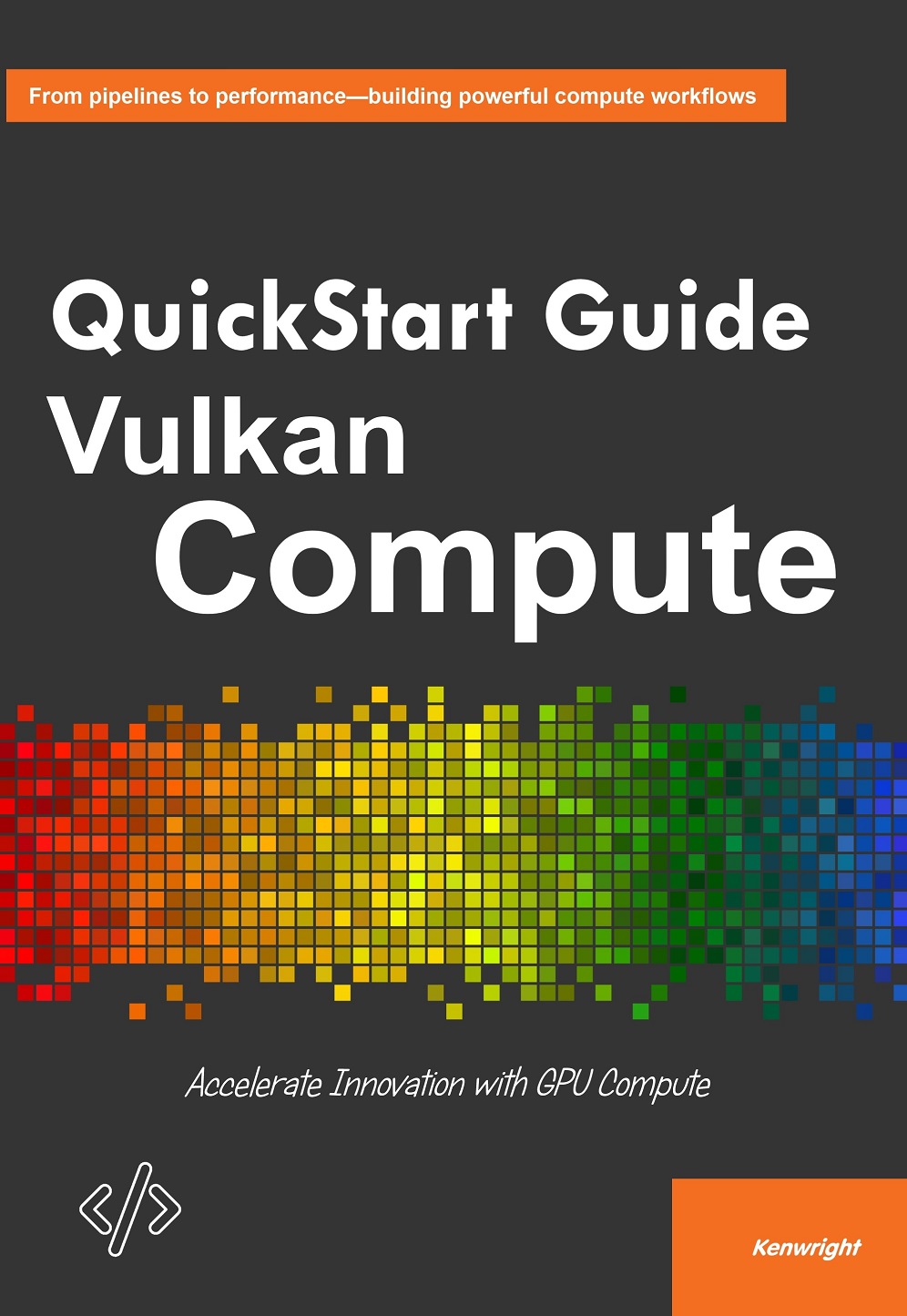
Quick Facts
- ISBN: 9798265109750
- Published: April 18, 2025
- Pages: 330
- Language: English
- Categories: Computers & Technology, Programming, Graphics & GPU, Parallel Computing, Software Development
About This Book
Advanced readers will appreciate the depth of analysis in the later chapters. QuickStart Guide to Vulkan Compute delves into emerging trends and debates within Vulkan Compute, GPU Programming, Compute Shaders, Parallel Processing, Graphics API, High Performance Computing, offering a forward-looking perspective that is both thought-provoking and relevant to ongoing developments in Vulkan Compute and GPU Programming and Compute Shaders and Parallel Processing and Graphics API and High Performance Computing. Throughout the book, QuickStart Guide to Vulkan Compute maintains a tone that is both authoritative and encouraging. This balance helps demystify complex ideas in Vulkan Compute, GPU Programming, Compute Shaders, Parallel Processing, Graphics API, High Performance Computing and fosters a sense of confidence in readers as they progress through the material. Practical applications are a key focus throughout the book. Each chapter on Vulkan Compute, GPU Programming, Compute Shaders, Parallel Processing, Graphics API, High Performance Computing includes real-world examples, case studies, and exercises that help readers apply what they've learned to their own Vulkan Compute and GPU Programming and Compute Shaders and Parallel Processing and Graphics API and High Performance Computing projects or research.
Key Features
- Step-by-step explanations
- Self-assessment checklists
- Glossary of key terms
- Online resources and supplements
- Exercises and review questions
- Tips and common pitfalls to avoid
- Chapter summaries for quick revision
About the Author
QuickStart Guide to Vulkan Compute
QuickStart Guide to Vulkan Compute combines academic rigor with practical experience in Computers & Technology. As a frequent speaker at international conferences, they are known for making complex ideas about Vulkan Compute, GPU Programming, Compute Shaders accessible to diverse audiences.
Related News & Articles
‘It’s insanely sinister’: horror writers on the scariest stories they’ve ever read - The Guardian
Oct 04, 2025‘It’s insanely sinister’: horror writers on the scariest stories they’ve ever read The Guardian
news.google.comAll the Queer Horror Books I Read During a 24 Hour Readathon - Book Riot
Oct 06, 2025All the Queer Horror Books I Read During a 24 Hour Readathon Book Riot
news.google.comBiblioracle: Revisiting the ‘Yes & Know’ invisible ink books of my youth - Chicago Tribune
Oct 15, 2025Biblioracle: Revisiting the ‘Yes & Know’ invisible ink books of my youth Chicago Tribune
news.google.comSizzling New Romance Books - The New York Times
Oct 15, 2025Sizzling New Romance Books The New York Times
news.google.comStuff Your Kindle Day: How to get free dark romance books until Oct. 26 - Mashable
Oct 08, 2025Stuff Your Kindle Day: How to get free dark romance books until Oct. 26 Mashable
news.google.comReader Reviews

Elizabeth Garcia
A Brilliant Synthesis of Theory and Practice
Having read numerous books on Vulkan Compute and GPU Programming and Compute Shaders and Parallel Processing and Graphics API and High Performance Computing, I can confidently say this is among the best treatments of Vulkan Compute, GPU Programming, Compute Shaders, Parallel Processing, Graphics API, High Performance Computing available. QuickStart Guide to Vulkan Compute's unique perspective comes from their 10 years of hands-on experience, which shines through in every chapter. The section on High Performance Computing alone is worth the price of admission, offering insights I haven't seen elsewhere in the literature. What impressed me most was how QuickStart Guide to Vulkan Compute managed to weave storytelling into the exploration of Vulkan Compute, GPU Programming, Compute Shaders, Parallel Processing, Graphics API, High Performance Computing. As a team lead in Vulkan Compute and GPU Programming and Compute Shaders and Parallel Processing and Graphics API and High Performance Computing, I found the narrative elements made the material more memorable. Chapter 3 in particular stood out for its clarity and emotional resonance.

Karen Taylor
A Must-Have for Lifelong Learners
I've been recommending this book to everyone in my network who's even remotely interested in Vulkan Compute, GPU Programming, Compute Shaders, Parallel Processing, Graphics API, High Performance Computing. QuickStart Guide to Vulkan Compute's ability to distill complex ideas into digestible insights is unmatched. The section on Graphics API sparked a lively debate in my study group, which speaks to the book's power to provoke thought. From the moment I started reading, I could tell this book was different. With over 6 years immersed in Vulkan Compute and GPU Programming and Compute Shaders and Parallel Processing and Graphics API and High Performance Computing, I've seen my fair share of texts on Vulkan Compute, GPU Programming, Compute Shaders, Parallel Processing, Graphics API, High Performance Computing, but QuickStart Guide to Vulkan Compute's approach is refreshingly original. The discussion on Compute Shaders challenged my assumptions and offered a new lens through which to view the subject. What sets this book apart is its balanced approach to Vulkan Compute, GPU Programming, Compute Shaders, Parallel Processing, Graphics API, High Performance Computing. While some texts focus only on theory or only on practice, QuickStart Guide to Vulkan Compute skillfully bridges both worlds. The case studies in chapter 2 provided real-world context that helped solidify my understanding of Vulkan Compute and GPU Programming and Compute Shaders and Parallel Processing and Graphics API and High Performance Computing. I've already recommended this book to several colleagues.

Jessica Miller
A Thought-Provoking and Rewarding Read
Having read numerous books on Vulkan Compute and GPU Programming and Compute Shaders and Parallel Processing and Graphics API and High Performance Computing, I can confidently say this is among the best treatments of Vulkan Compute, GPU Programming, Compute Shaders, Parallel Processing, Graphics API, High Performance Computing available. QuickStart Guide to Vulkan Compute's unique perspective comes from their 6 years of hands-on experience, which shines through in every chapter. The section on GPU Programming alone is worth the price of admission, offering insights I haven't seen elsewhere in the literature. What impressed me most was how QuickStart Guide to Vulkan Compute managed to weave storytelling into the exploration of Vulkan Compute, GPU Programming, Compute Shaders, Parallel Processing, Graphics API, High Performance Computing. As a consultant in Vulkan Compute and GPU Programming and Compute Shaders and Parallel Processing and Graphics API and High Performance Computing, I found the narrative elements made the material more memorable. Chapter 5 in particular stood out for its clarity and emotional resonance.

James Thomas
The Definitive Guide I've Been Waiting For
What sets this book apart is its balanced approach to Vulkan Compute, GPU Programming, Compute Shaders, Parallel Processing, Graphics API, High Performance Computing. While some texts focus only on theory or only on practice, QuickStart Guide to Vulkan Compute skillfully bridges both worlds. The case studies in chapter 7 provided real-world context that helped solidify my understanding of Vulkan Compute and GPU Programming and Compute Shaders and Parallel Processing and Graphics API and High Performance Computing. I've already recommended this book to several colleagues. Having read numerous books on Vulkan Compute and GPU Programming and Compute Shaders and Parallel Processing and Graphics API and High Performance Computing, I can confidently say this is among the best treatments of Vulkan Compute, GPU Programming, Compute Shaders, Parallel Processing, Graphics API, High Performance Computing available. QuickStart Guide to Vulkan Compute's unique perspective comes from their 5 years of hands-on experience, which shines through in every chapter. The section on Compute Shaders alone is worth the price of admission, offering insights I haven't seen elsewhere in the literature.

Charles Garcia
Changed My Perspective Completely
Rarely do I come across a book that feels both intellectually rigorous and deeply human. QuickStart Guide to Vulkan Compute's treatment of Vulkan Compute, GPU Programming, Compute Shaders, Parallel Processing, Graphics API, High Performance Computing is grounded in empathy and experience. The chapter on GPU Programming left a lasting impression, and I've already begun applying its lessons in my classroom. This book exceeded my expectations in its coverage of Vulkan Compute, GPU Programming, Compute Shaders, Parallel Processing, Graphics API, High Performance Computing. As a educator in Vulkan Compute and GPU Programming and Compute Shaders and Parallel Processing and Graphics API and High Performance Computing, I appreciate how QuickStart Guide to Vulkan Compute addresses both foundational concepts and cutting-edge developments. The writing style is engaging yet precise, making even dense material about Vulkan Compute, GPU Programming, Compute Shaders, Parallel Processing, Graphics API, High Performance Computing enjoyable to read. I've already incorporated several ideas from this book into my research with excellent results.

John Martin
The Gold Standard in Its Category
I approached this book as someone relatively new to Vulkan Compute and GPU Programming and Compute Shaders and Parallel Processing and Graphics API and High Performance Computing, and I was pleasantly surprised by how quickly I grasped the concepts around Vulkan Compute, GPU Programming, Compute Shaders, Parallel Processing, Graphics API, High Performance Computing. QuickStart Guide to Vulkan Compute has a gift for explaining complex ideas clearly without oversimplifying. The exercises at the end of each chapter were invaluable for reinforcing the material. It's rare to find a book that serves both as an introduction and a reference work, but this one does so admirably. From the moment I started reading, I could tell this book was different. With over 9 years immersed in Vulkan Compute and GPU Programming and Compute Shaders and Parallel Processing and Graphics API and High Performance Computing, I've seen my fair share of texts on Vulkan Compute, GPU Programming, Compute Shaders, Parallel Processing, Graphics API, High Performance Computing, but QuickStart Guide to Vulkan Compute's approach is refreshingly original. The discussion on High Performance Computing challenged my assumptions and offered a new lens through which to view the subject. Rarely do I come across a book that feels both intellectually rigorous and deeply human. QuickStart Guide to Vulkan Compute's treatment of Vulkan Compute, GPU Programming, Compute Shaders, Parallel Processing, Graphics API, High Performance Computing is grounded in empathy and experience. The chapter on Compute Shaders left a lasting impression, and I've already begun applying its lessons in my client work.

Jennifer Anderson
An Instant Favorite on My Bookshelf
What sets this book apart is its balanced approach to Vulkan Compute, GPU Programming, Compute Shaders, Parallel Processing, Graphics API, High Performance Computing. While some texts focus only on theory or only on practice, QuickStart Guide to Vulkan Compute skillfully bridges both worlds. The case studies in chapter 6 provided real-world context that helped solidify my understanding of Vulkan Compute and GPU Programming and Compute Shaders and Parallel Processing and Graphics API and High Performance Computing. I've already recommended this book to several colleagues. As someone with 12 years of experience in Vulkan Compute and GPU Programming and Compute Shaders and Parallel Processing and Graphics API and High Performance Computing, I found this book to be an exceptional resource on Vulkan Compute, GPU Programming, Compute Shaders, Parallel Processing, Graphics API, High Performance Computing. QuickStart Guide to Vulkan Compute presents the material in a way that's accessible to beginners yet still valuable for experts. The chapter on GPU Programming was particularly enlightening, offering practical applications I hadn't encountered elsewhere.

John Jackson
The Gold Standard in Its Category
I've been recommending this book to everyone in my network who's even remotely interested in Vulkan Compute, GPU Programming, Compute Shaders, Parallel Processing, Graphics API, High Performance Computing. QuickStart Guide to Vulkan Compute's ability to distill complex ideas into digestible insights is unmatched. The section on Compute Shaders sparked a lively debate in my study group, which speaks to the book's power to provoke thought. What impressed me most was how QuickStart Guide to Vulkan Compute managed to weave storytelling into the exploration of Vulkan Compute, GPU Programming, Compute Shaders, Parallel Processing, Graphics API, High Performance Computing. As a team lead in Vulkan Compute and GPU Programming and Compute Shaders and Parallel Processing and Graphics API and High Performance Computing, I found the narrative elements made the material more memorable. Chapter 5 in particular stood out for its clarity and emotional resonance. I approached this book as someone relatively new to Vulkan Compute and GPU Programming and Compute Shaders and Parallel Processing and Graphics API and High Performance Computing, and I was pleasantly surprised by how quickly I grasped the concepts around Vulkan Compute, GPU Programming, Compute Shaders, Parallel Processing, Graphics API, High Performance Computing. QuickStart Guide to Vulkan Compute has a gift for explaining complex ideas clearly without oversimplifying. The exercises at the end of each chapter were invaluable for reinforcing the material. It's rare to find a book that serves both as an introduction and a reference work, but this one does so admirably.

Robert Martin
An Instant Favorite on My Bookshelf
This book exceeded my expectations in its coverage of Vulkan Compute, GPU Programming, Compute Shaders, Parallel Processing, Graphics API, High Performance Computing. As a educator in Vulkan Compute and GPU Programming and Compute Shaders and Parallel Processing and Graphics API and High Performance Computing, I appreciate how QuickStart Guide to Vulkan Compute addresses both foundational concepts and cutting-edge developments. The writing style is engaging yet precise, making even dense material about Vulkan Compute, GPU Programming, Compute Shaders, Parallel Processing, Graphics API, High Performance Computing enjoyable to read. I've already incorporated several ideas from this book into my research with excellent results. As someone with 5 years of experience in Vulkan Compute and GPU Programming and Compute Shaders and Parallel Processing and Graphics API and High Performance Computing, I found this book to be an exceptional resource on Vulkan Compute, GPU Programming, Compute Shaders, Parallel Processing, Graphics API, High Performance Computing. QuickStart Guide to Vulkan Compute presents the material in a way that's accessible to beginners yet still valuable for experts. The chapter on Graphics API was particularly enlightening, offering practical applications I hadn't encountered elsewhere. Having read numerous books on Vulkan Compute and GPU Programming and Compute Shaders and Parallel Processing and Graphics API and High Performance Computing, I can confidently say this is among the best treatments of Vulkan Compute, GPU Programming, Compute Shaders, Parallel Processing, Graphics API, High Performance Computing available. QuickStart Guide to Vulkan Compute's unique perspective comes from their 10 years of hands-on experience, which shines through in every chapter. The section on Compute Shaders alone is worth the price of admission, offering insights I haven't seen elsewhere in the literature.

Sarah Thomas
Packed with Wisdom and Real-World Insight
What sets this book apart is its balanced approach to Vulkan Compute, GPU Programming, Compute Shaders, Parallel Processing, Graphics API, High Performance Computing. While some texts focus only on theory or only on practice, QuickStart Guide to Vulkan Compute skillfully bridges both worlds. The case studies in chapter 2 provided real-world context that helped solidify my understanding of Vulkan Compute and GPU Programming and Compute Shaders and Parallel Processing and Graphics API and High Performance Computing. I've already recommended this book to several colleagues. I've been recommending this book to everyone in my network who's even remotely interested in Vulkan Compute, GPU Programming, Compute Shaders, Parallel Processing, Graphics API, High Performance Computing. QuickStart Guide to Vulkan Compute's ability to distill complex ideas into digestible insights is unmatched. The section on Vulkan Compute sparked a lively debate in my study group, which speaks to the book's power to provoke thought.
Readers Also Enjoyed
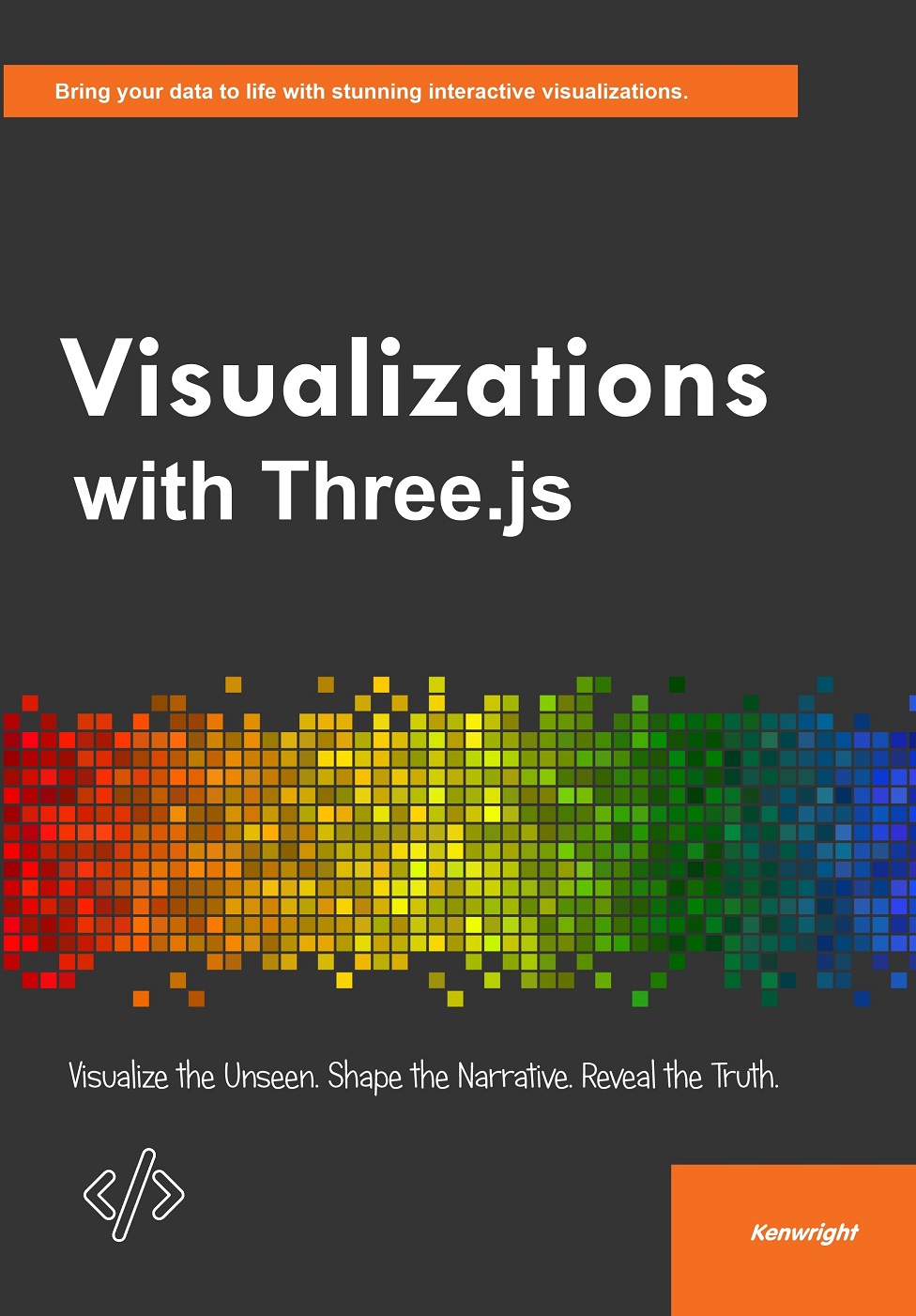
Visualizations with Three.js
View Details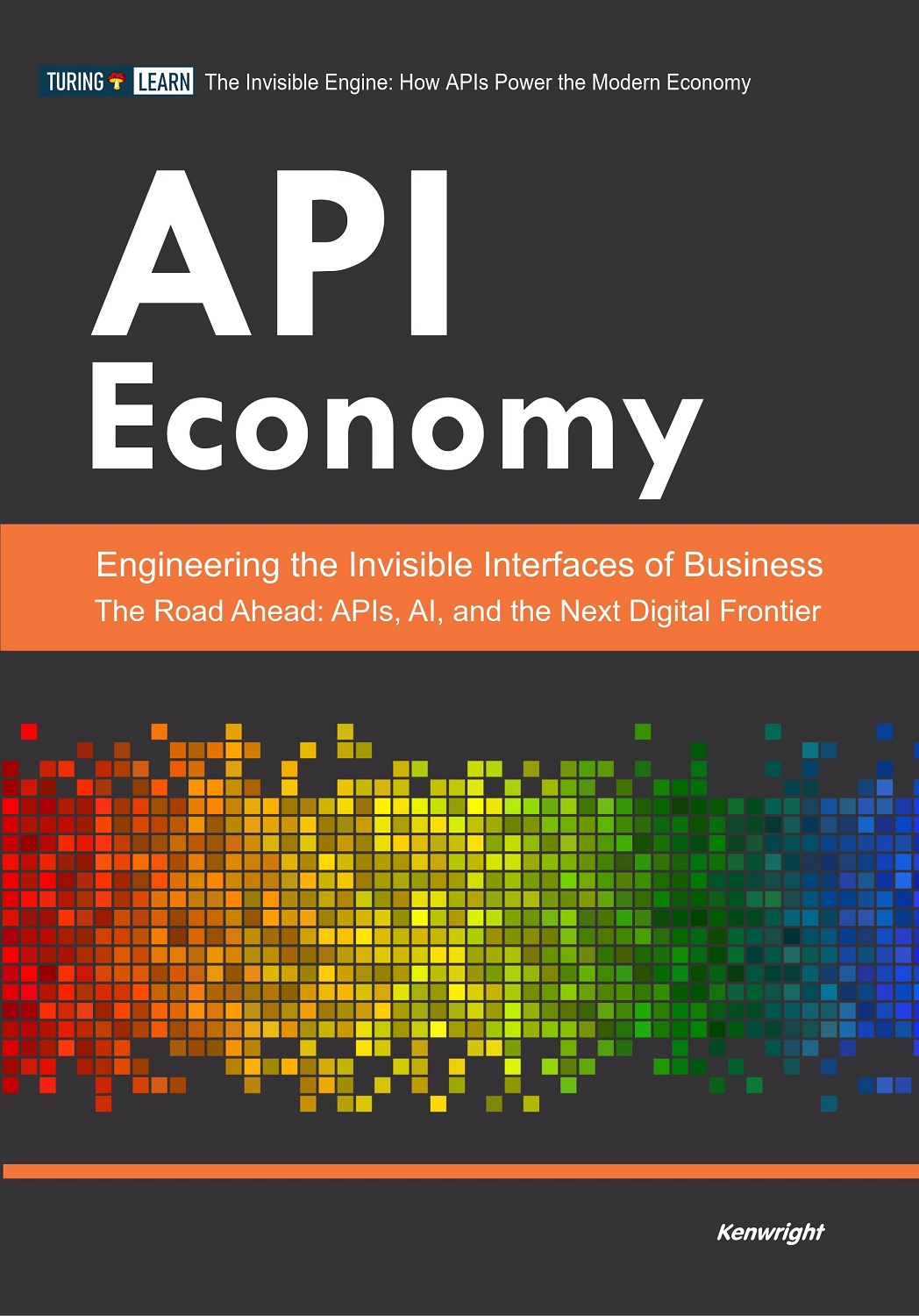
API Economy
View Details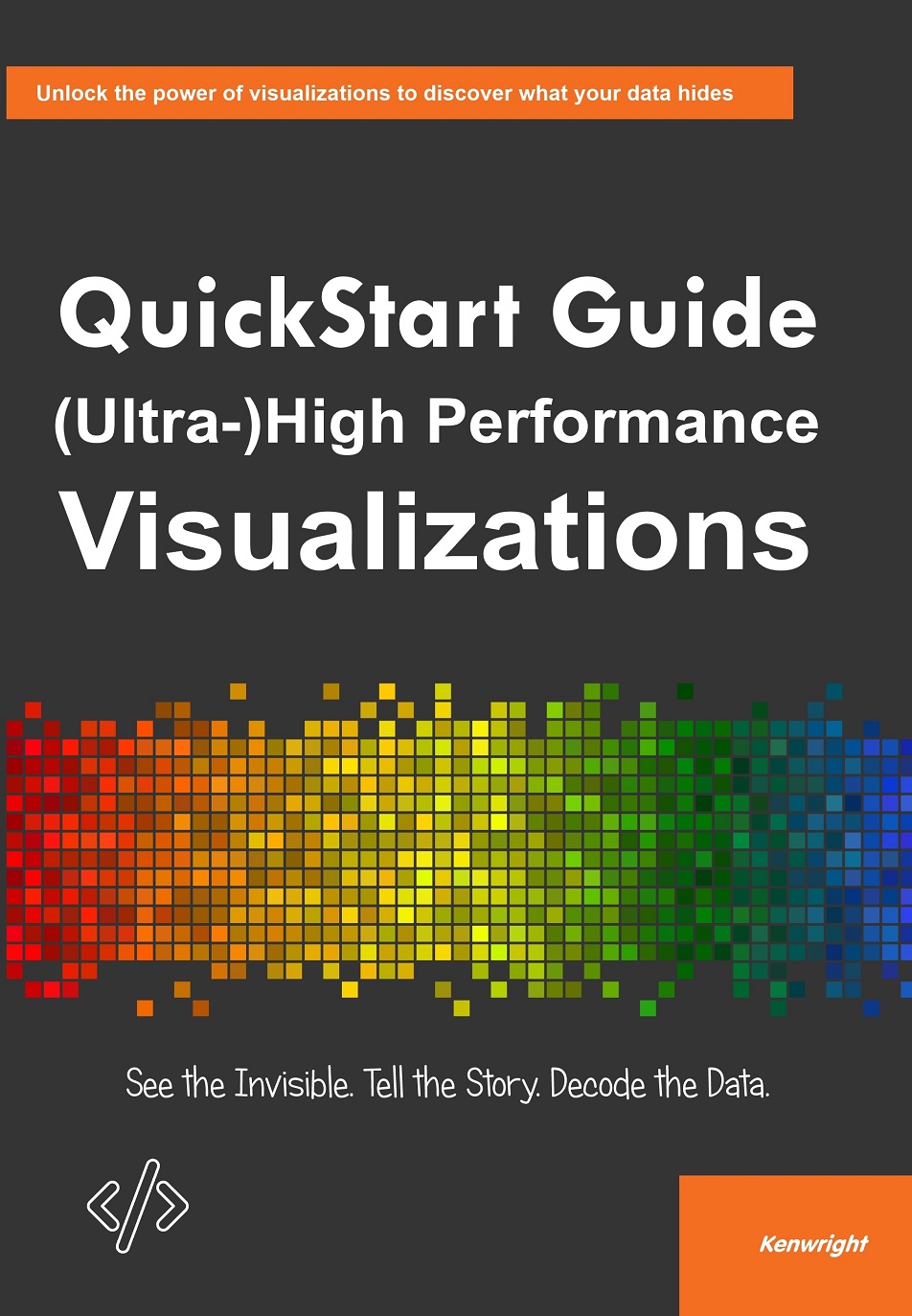
QuickStart Guide to (Ultra-)High Performance Visua...
View Details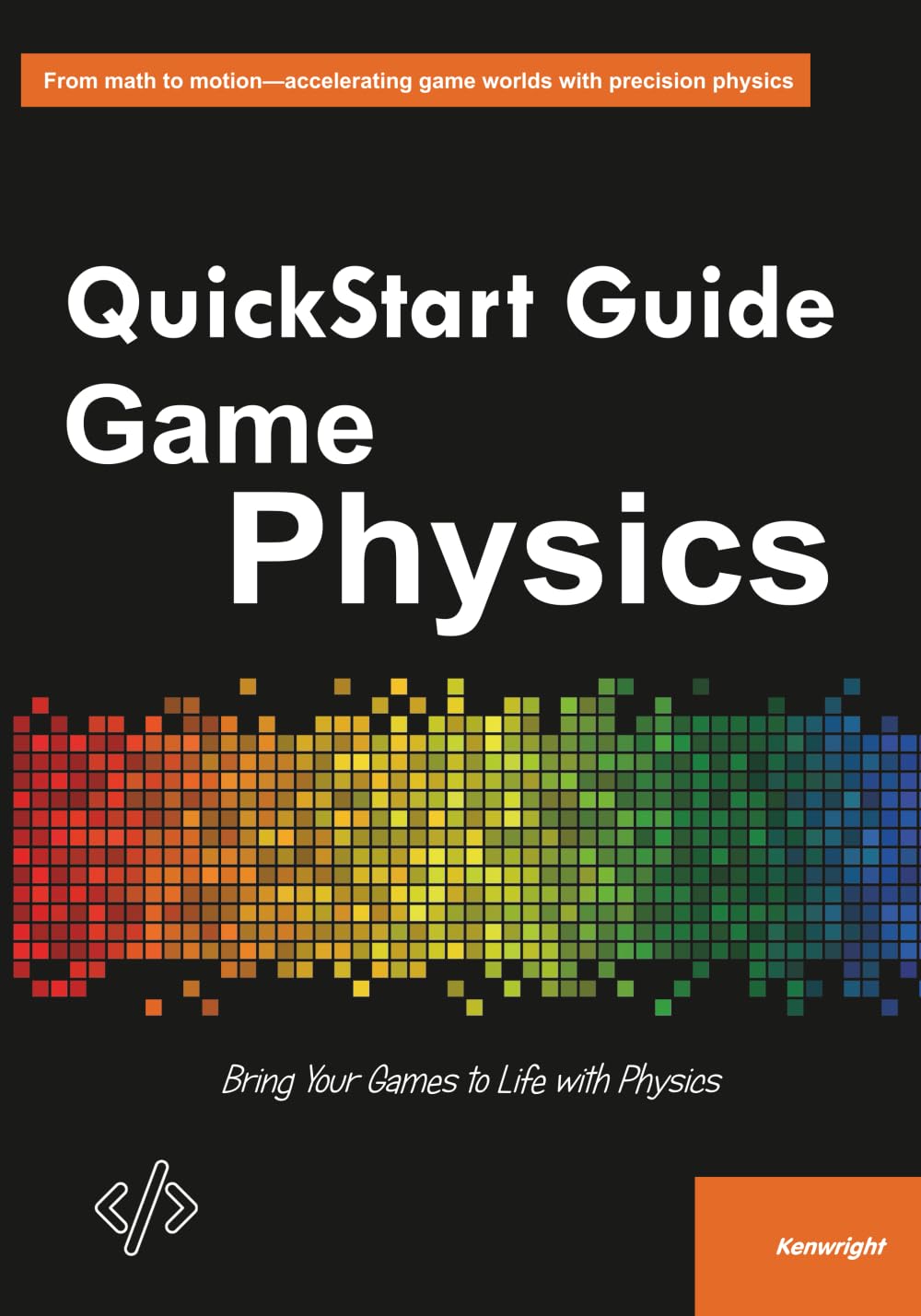
Reader Discussions
Share Your Thoughts
Joseph Wilson
The discussion on High Performance Computing was particularly helpful for my current project. I'd love to hear how others have applied these concepts.
Posted 9 days ago ReplyJessica Garcia
If you're into Compute Shaders, you might enjoy exploring a companion book as well.
Posted 1 days agoLinda Martinez
I love how the author weaves personal anecdotes into the discussion of Parallel Processing. It made the material feel more relatable.
Posted 29 days ago ReplyJessica Thomas
I found the exercises on High Performance Computing incredibly valuable. Took me a few tries to get through them all, but the effort paid off.
Posted 7 days ago ReplySusan Wilson
I'm curious - do you think the treatment of Compute Shaders was intentional or more of a byproduct of the narrative?
Posted 7 days agoMary Taylor
I found the exercises on Parallel Processing incredibly valuable. Took me a few tries to get through them all, but the effort paid off.
Posted 2 days ago ReplyPatricia Martinez
I completely agree about Graphics API! Have you checked out the additional resources the author mentions in the appendix?
Posted 8 days agoJessica Wilson
Does anyone know if Vulkan Compute is covered in more depth in the author's other works? This introduction was fantastic but left me wanting more!
Posted 24 days ago ReplyElizabeth Martin
I'm glad you mentioned Vulkan Compute. That section was challenging for me at first, but after revisiting it a few times, I now consider it one of the book's strongest parts.
Posted 4 days ago